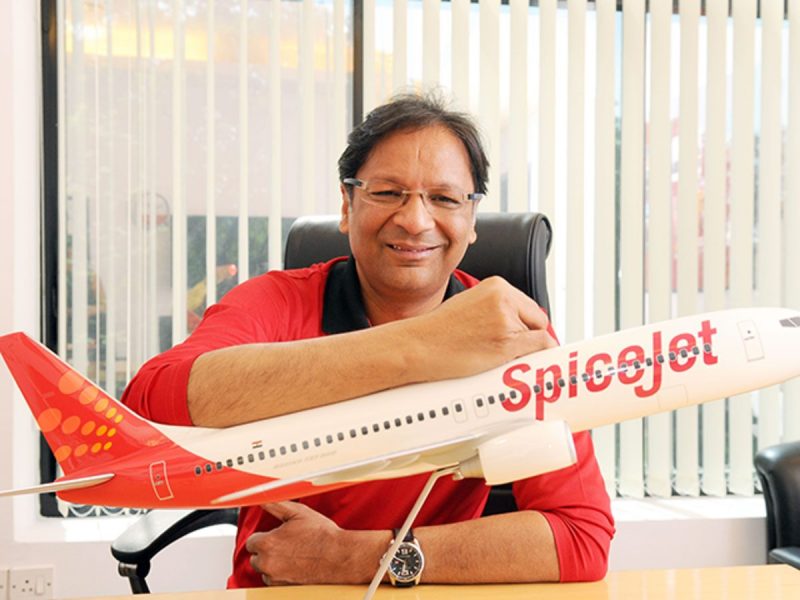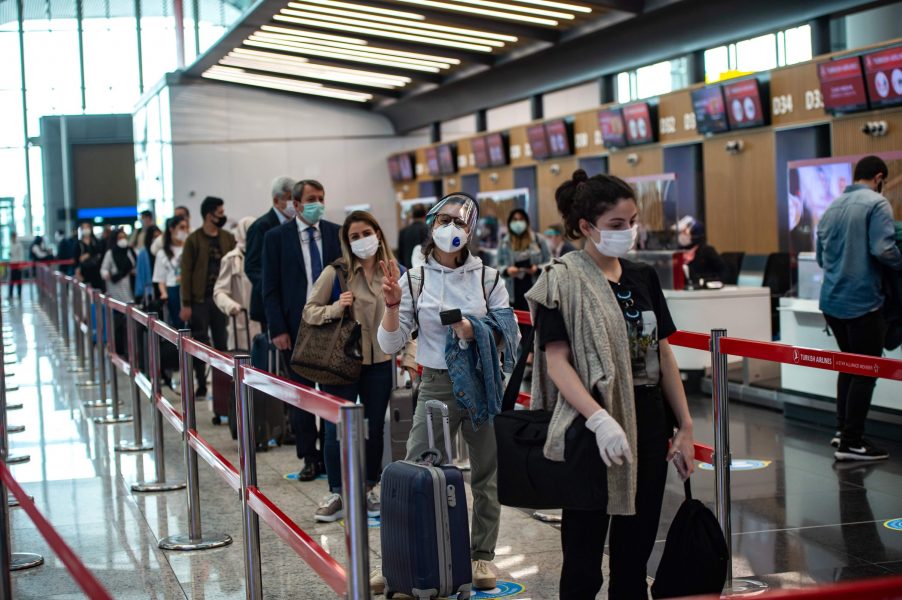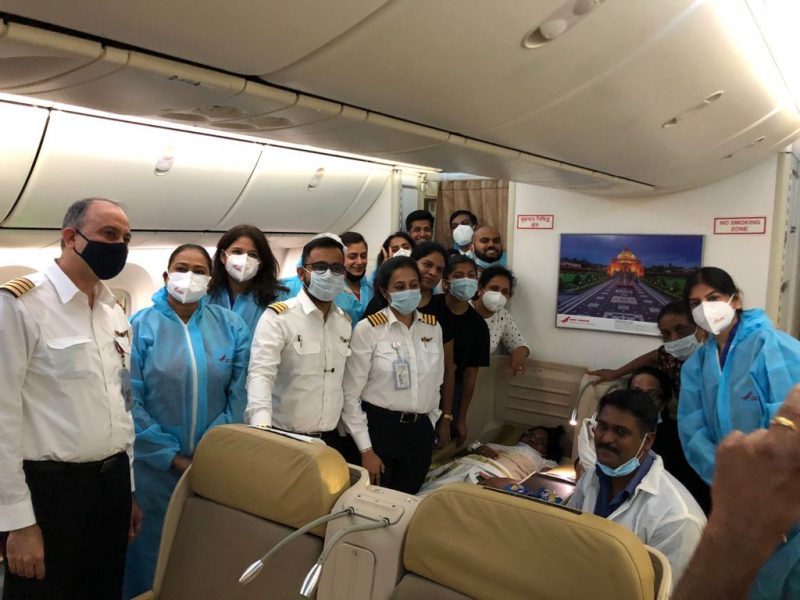If there's one thing that can't be stopped, it is the evolution of technology. The current global scenario has only pushed the industry further to find better and efficient ways of getting things done.Today, when you look at it, cloud computing has become as common as a child using Excel spreadsheet in high school. The developers behind this technology have been making leaps and bounds for airlines and airports to ramp up cloud usage across the globe.
Getting started
Uniting Aviation
Safety is paramount in the aviation sector. The maturation of cloud technology has allowed organisations to safely implement modern systems efficiently and securely.For instance, it was just a few days back that Honeywell Aerospace introduced "Anthem"- a cloud-connected cockpit system, the first of its kind in aviation.
Cloud computing has been assisting carriers launch new routes swiftly. Although it is the major hubs that have progressed much with cloud technology, the small and medium-sized airports have the same needs as well- notes SITA ( Société Internationale de Télécommunications Aéronautiques) -the leading specialist in air transport communications and information technology. Elevated passenger requirements and the increasing dependence of airlines on digitization has pushed cloud technology to be scaled up on a rapid level.
Airports now deploy “shared common-use approaches” reasonably while cutting down on space, maintenance, and infrastructure. Check-in, bag drop, and off-airport processing are some departments that make use of this innovative technology.
In the current unprecedented times, improvisation and adapting is the only way forward. The pandemic has brought along with it a set of challenges and hence the industry is now leaning on cloud computing to overcome those.
COVID has accelerated an existing trend towards automation of the passenger journey, where your mobile is your remote control for travel and your face acts as your boarding card. Smart Path, together with SITA Flex, enable that experience. SITA Smart Path is a suite of integrated biometric and cloud-enabled solutions designed to enable a low-touch airport experience for greater efficiency and improved passenger satisfaction, allowing passengers to interact with all airport touchpoints via their mobile devicesSergio Colella, SITA President Europe
What is cloud technology?
The best part about this is its ability to integrate easily into current environments. Cloud computing is the on-demand availability of computer system resources without the direct management by the user. This saves costs, speeds up processes, all while increasing reliability, mobility, scalability, and security.
1.Rome Fiumicino Airport uses Smart Path technology and allows aircraft boarding using your biometric.
Contactless Baggage-Drop | BEUMER group
2. Beijing Capital International Airport uses the same technology to speed up passenger processing- 400 passengers can now board an A380 in less than 20 minutes.
Contactless boarding | Airport Technology
3."Smart path" has also improved passenger experience at duty free shopping. Guests now have to just scan their face rather than fumble with their boarding passes.
Biometric face scan | The Economist
Modern platforms enable real-time, reliable collaboration at scale in a cloud-based environment. Thereby, more airports, now more than ever, are embracing cloud and the re-use of it.
With safety and security at the centre of operations in the current scenario stakeholders in the aviation industry will undoubtedly be keen to keep the momentum going with cloud utilization. And rightly so.
Furthermore, SITA also underscores the fact its various cloud platforms meet the requirements for operations at the airport and for the aircraft to be more price-sensitive, responsive, and resilient.
The industry is now slowly reeling back to recovery and cloud computing could well play a huge part in its recovery and subsequent growth.
What do you think of the rapidly emerging cloud technology that is taking over the aviation industry? Drop in your thoughts below.
COVER: Aurelius Corporate Solutions
Read next
Alliance Air will begin operating on the Kolkata-Guwahati-Aizawl-Shillong sector on October 18, according to a state official on Thursday, October 7.In the state's north-eastern region, two other airlines are currently in operation.
From October 18, Mizoram's principal civil aviation consultant, Wing Commander J Lalhmingliana, said Alliance Air would operate an ATR-72 aircraft four days a week.
(Image courtesy - Facebook)
The service will run on Mondays, Tuesdays, Thursdays, and Saturdays on the Kolkata-Guwahati-Aizawl-Shillong route, and booking will begin on October 11.
Air India and IndiGo, according to Lalhmingliana, currently operate in the state.
IndiGO flies an Airbus A320 on the Delhi-Aizawl and Bangalore-Guwahati-Aizawl sectors six days a week, while Air India operates an Airbus A319 on the Kolkata-Guwahati-Aizawl-Imphal sector four days a week, he said.
From November, he said, the state might get another air service on the Aizawl-Agartala route.
(Image Courtesy - Air India)
Airline Allied Services Limited, operating as Alliance Air, is a wholly-owned subsidiary of Air India. The carrier commenced service operations on April 1996, delivering flights to Tier-2 and Tier-3 destinations from base stations at Delhi, Mumbai, Bengaluru, Kolkata, Hyderabad & Bhopal.
Alliance Air also provides chartered services to International destinations through its hubs. Alliance Air is the launch carrier of India's Regional Connectivity Scheme, also known as Ude Desh Ka Aam Naagrik, with the commencement of the Shimla-Delhi service in April 2017.
Recently, Disinvestment-bound Air India’s regional arm Alliance Air announced that it will begin operating daily direct flights from Mumbai to the newly constructed Sindhudurg Airport on October 9.
Cover Image - Airliners.net
Read next
Chairman of SpiceJet Ltd. Ajay Singh wants to expand the company's fleet of passenger jets and cargo hauliers as the Indian airline's financial performance improve after a difficult period during the pandemic.
Due to a combination of cost cuts, renegotiated aircraft leases, an increase in air travel traffic in India, and the growth of the company's new cargo operation, Singh believes the no-frills carrier has a "reasonable chance" of breaking even this quarter through December.
(Image Courtesy - India TV News)
“We are easily the largest player in that space in our part of the world,” he said in an interview at an annual International Air Transport Association meeting in Boston. “We, like other airlines, made losses in this period but on the other side we built out this asset.”
SpiceJet lost INR 7.3 billion ($98 million) in the June quarter, falling short of analyst expectations of an INR 6.3 billion loss. After the company deferred pay for much of this year, a move that prompted a strike at Delhi airport in September, Singh said that all employees' salaries have now been restored.
SpiceJet rose 1% Tuesday morning in Mumbai. The shares are down 20% this year.
SpiceJet's cargo business, according to Singh, will generate $1 billion in revenue in two to three years, up from $350 million this year. He estimates that the company will need "at least" 10-15 more wide-body jets to expand capacity beyond its current fleet of nine, with the first additions arriving as soon as next month.
(Image Courtesy - Jharsuguda Live)
Singh said he wants to add another 30-40 passenger planes to SpiceJet's fleet in the next two years, on top of the 155 Boeing 737 Max planes already on order. After a lengthy grounding following deadly crashes in Indonesia and Ethiopia, Indian regulators cleared the Max to fly again in August.
SpiceJet will resume flights on the Max on October 8 and hopes to reach an agreement with Boeing "very soon" over costs incurred while the plane was grounded, according to Singh. He remained tight-lipped about the specifics of a possible compensation deal with Boeing.
“SpiceJet will definitely need capacity because a lot of our old aircraft are slated for lease returns over the next year,” he said. “In any case, SpiceJet’s strategy always was to convert to newer aircraft, more fuel-efficient aircraft, and try to offer a better product to consumers.”
At Kolkata airport, a SpiceJet Boeing B-737 MAX 8 aircraft racked up a parking fee of INR 5.5 crore. For the past 30 months, VT-MXA has been stationed at the Kolkata airport.
The SpiceJet aircraft delivered to the airline in Kolkata on November 2, 2018, was only four months old before it was grounded worldwide due to two crashes.
Recently, SpiceJet and the online travel portal EaseMyTrip have teamed up to offer travellers a customised experience for holiday bookings for the upcoming season. Under this partnership, EaseMyTrip will offer customers a booking platform to SpiceJet.
(Inputs from Ryan Beene - Bloomberg Quint)
Cover Image - The Economic Times
Read next
In September, India's domestic air passenger traffic increased by 2-3% to around 69 lakh, up from around 67 lakh in August, according to credit rating agency ICRA in a statement released on Wednesday, October 6.
In September 2021, the local carrier had 54% more capacity than the same month the previous year.
It said that y-o-y, air passenger traffic growth in the month under review was around 74% higher than September 2020.
"For September 2021, average daily departures were at around 2,100, significantly higher than the average daily departures of around 1,321 in September 2020, and higher than around 1,900 in August 2021, though they remained lower than around 2,200 in January 2021.The average number of passengers per flight during September was 113, against an average of 117 passengers per flight in August. Though the recovery continued in September, demand continues to be subdued from the corporate traveller segment as reflected by passenger traffic being lower by around 38% in September compared to pre-Covid levels."Suprio Banerjee, Vice President and Sector Head, ICRA
It said that airlines saw around 61,100 departures in September, compared to 39,628 departures in the same month of 2020, and that the number of departures in the previous month was up by around 6% sequentially, as Covid-19 infections showed a downward trend.
Due to the resurgence of the second wave of the pandemic, the Civil Aviation Ministry reduced the permissible capacity deployment to 50% of pre-Covid levels, effective June 1. With effect from August 12, it increased this capacity to 72.5%, which has now been increased to 85% with effect from September 18 until further orders.
(Image Courtesy - Today Show)
Additionally, effective September 18, the ministry relaxed the fare cap rule wherein the fare caps in each of the bands will be applicable up to the next only 15 days on a rolling basis, implying that the minimum and maximum fare chargeable will continue to be rolled over for the next 15 days cycle compared to 30 days earlier.
However, ICRA continues to maintain a negative outlook on the Indian aviation industry. It conveyed that the financial performance of the Indian airlines is likely to remain weak as material recovery in passenger traffic to pre-Covid-19 levels is unlikely in the near term. This is due to continued restrictions on international travel and subdued demand from the corporate traveller segment.
(Image Courtesy - The Economic Times)
Given the onset of the festive season, ICRA believes that the increase in permitted capacity to 85% levels is a step in the right direction. The reduction in the fare cap rollover period from 30 to 15 days is also a move toward market-driven pricing, as it was before Covid, when pricing was determined by actual demand-supply dynamics and real passenger load factors, according to the statement.
ICRA said that aviation turbine fuel (ATF) prices have seen a sharp increase of 78.6% on a Y-o-Y basis till October 2021, attributed to increasing in crude oil prices, coupled with low capacity utilisation of aircraft fleet will continue to weigh on the financial performance of Indian carriers in FY'2022.
Furthermore, the credit profile of most Indian carriers continues to be characterised by a weak liquidity position, it added.
In July, domestic air passenger traffic jumped 57% to around 49 lakh.
(With Inputs from PTI)
Cover Image - Daily Sabah
Read next
After a baby was born on board the Boeing 787 on Tuesday, October 5, Air India's London-Kochi flight AI 150 was rerouted to Frankfurt. After the plane took off from London at 1:21 PM local time, the woman went into labour (6:51 PM IST).
https://twitter.com/airindiain/status/1445802605515468807
The baby was delivered by two doctors and four nurses who were among the passengers, as well as the flight's cabin crew. The plane was flying over the Black Sea on its way to India at the time. The airline decided to divert to the nearest airport, Frankfurt, and turn in that direction because the newborn and mother required medical attention. Around 11 PM IST, the plane touched down in Frankfurt.
An AI spokesperson confirmed a team of two doctors and four nurses helped in the delivery. "All onboard equipment were used, two first-aid kits and one physician's kit. The baby and mother, who was seven months pregnant, are fine. The woman, newborn and one person travelling with her have alighted at Frankfurt.”
(Image Courtesy - Twitter)
The aircraft was carrying over 210 people on board, including 193 economy and 11 business class passengers. ?
“The human face of Air India was evident yet again as a lady passenger flying from Kochi to London went into labour mid-air. Our experienced cabin crew swung into action and identifying doctors on board sought their assistance to deliver the child. We have always put passenger wellbeing over monetary aspects. The moment the baby was born and knowing that our destination was several hours away, we immediately decided to divert to Frankfurt."Spokesperson, Air India
Many AI employees see the birth of a baby just ahead of the announcement of the airline’s future buyer, likely to be founder Tata Group, as a “good sign”. “We are awaiting the rebirth of our airline under the new owner, hopefully, the Tatas. This is the beginning of new beginnings,” said a long-time employee.
Similarly in March 2021, a baby girl was born on an IndiGo flight which was flying from Bangalore to Jaipur. A doctor, who was on the same flight, safely delivered the baby.
In a similar instance, a baby boy was born inside IndiGo’s Delhi-Bengaluru flight in October 2020. Luckily, a doctor was on board and assisted with the premature delivery.
Read next
MoCA| Deputy director generals (DGs) and officers of Indian Air Force (IAF) to be considered for the post of chief of India’s aviation regulator
Prashant-prabhakar
07 Oct 2021
With two crucial audits around the corner, the Ministry of Civil Aviation (MoCA) has put forward the proposal that deputy director generals (DGs) and officers of Indian Air Force (IAF) be considered for the post of chief of India’s aviation regulator-DGCA.
Mr. Arun kumar, the reigning head of the Directorate General of Civil Aviation (DGCA) , has been promoted as secretary and is expected to move out soon.
Arun Kumar | The Economic Times
The US Federal Aviation Administration (FAA) will be auditing India's safety mechanism this year followed by the ICAO, who is scheduled to audit by early next year.
During the last audit, ICAO pointed out that the director general’s post doesn’t have fixed recruitment rules and tenure. We are fixing this before the auditsaid a senior government official.
The international assessment by the ICAO and FAA scrutinize the overall adequacy of a country’s laws, administrative rules and regulatory staffing. Also worth noting is the fact that these audits are scheduled to take place at a time when the country had recently witnessed a fatal crash when an Air India Express flight overshot the runway at Kozhikode amd plunged into a gorge killing 20 out of the 190 onboard-including the pilot and co-pilot.The final investigation reports revealed systematic faults and non-adherence to SOPs as the main cause.Also, the FAA in 2014,had downgraded India’s aviation safety ranking, finding regulatory oversight to be inadequate.This downgrade can be a huge blow to the Indian operators looking to expand their operations in the overseas.
Hence, there has been several demands from the aviation fraternity to find someone who's an expert in aviation, to head the civil aviation regulator and is independent of MoCA.
Regulators in developed markets are headed by industrial veterans and aviation experts.The FAA is headed by Steve Dickson who has nearly three decades of experience at Delta Air Lines and who retired as senior vice president of flight operations.
Steve Dickson | Geospatial World
The late Kanu Gohain (2006-08), was the last known industry veteran to have headed the DGCA, with 35 years of experience in the industry.
Kanu Gohain | The Hans India
Not everyone is happy with the newly proposed rules though. The past and present officials of MoCA and DGCA are sceptical since the selection committee comprises of three Indian Administrative Service (IAS) officials and the appointment will not be through the Union Public Service Commission (UPSC) selection board.
This is just an eyewash to satisfy the ICAO and FAA officials. The selection committee is headed by a Cabinet secretary and has a secretary and a joint secretary of MoCA as members. The candidate will also not be interviewed by UPSC, which makes it clear that it will be an IAS officer nominated by MoCAsaid a former senior DGCA official.
What do the experts say?
According to expert opinion, those with exposure in civil aviation, inherently has association with an airline, which can be problematic if the person is made the DGCA chief.The head of DGCA is expected to have leadership qualities and ability to coordinate with multiple ministries and foreign governments and only an experienced IAS official can do that.
The current DG has been good. He gives danda (stick) very often but also knows when to offer a carrot. That is an ability the regulator of a growing market like India should haveformer senior DGCA official
COVER: Eurocontrol






Comment